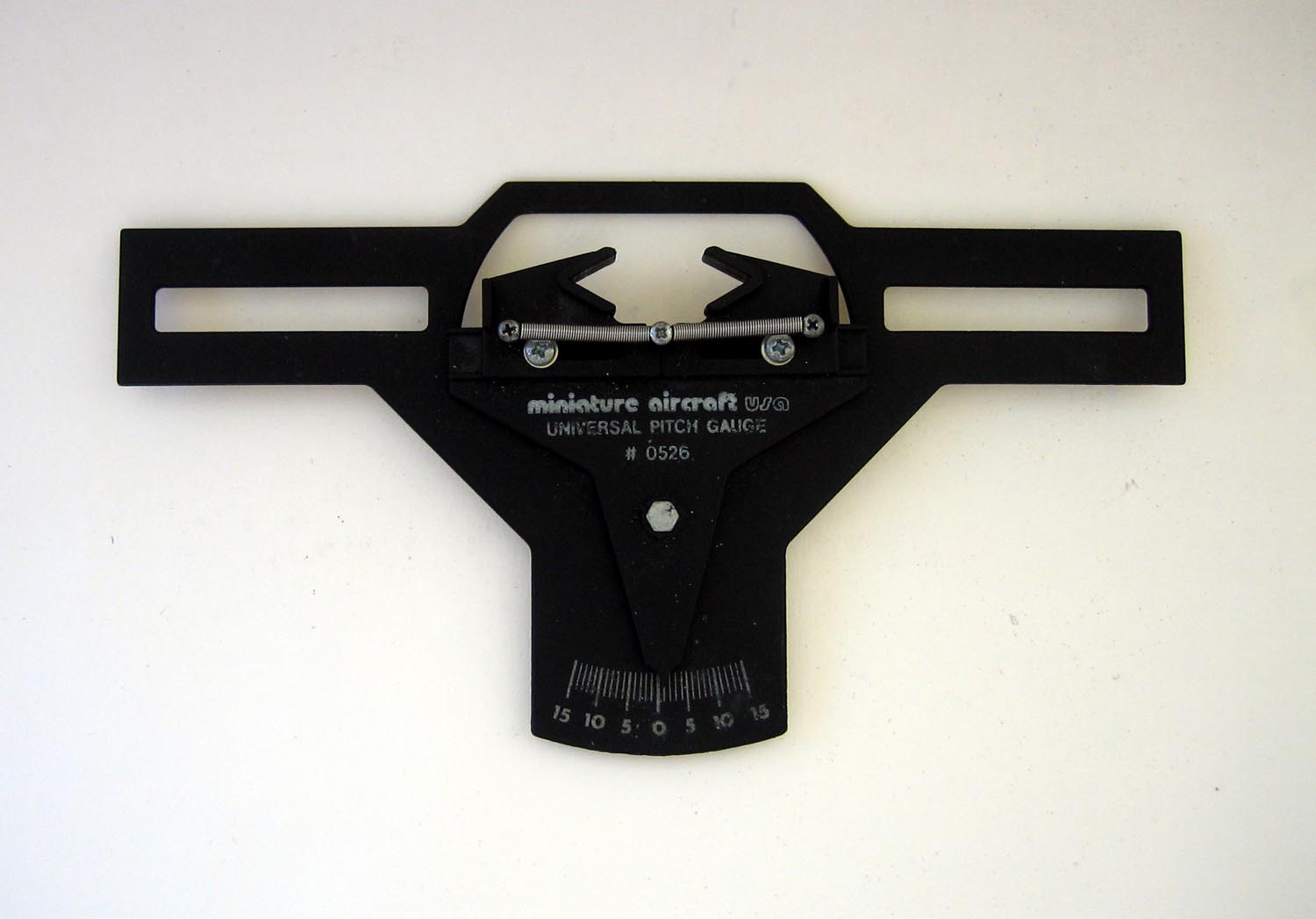In my previous blog on the pitch gauge I said the accuracy of the gauge is less important than its ease of use and the repeatability of the results. The reason I say accuracy is less important is because one of the requirements to use a pitch gauge with a flybar helicopter is that the swashplate and flybar must be level and aligned, but there is no real way to be absolutely sure they are. And if either are slightly out of adjustment, the pitch readings on the gauge will be inaccurate. This means any readings taken from the gauge are probably within a +/- 1° accuracy range. But for our work that’s fine. Remember, the initial collective pitch setup is just to get the rotor blades in the proper flying range, with further adjustments made once we see how the helicopter performs.
Another reason the accuracy of the pitch gauge is less important is because with the advent of the new computer radios it’s also much easier to make further pitch adjustments at the flying field – and almost while flying the helicopter. It’s certainly not uncommon to make a short flight, land, and with the engine at idle use the pitch curve function of the radio to make a slight adjustment, and then fly again to see the results. In this case the pitch gauge was not used to make the adjustment, but once the helicopter does perform to your satisfaction, the pitch gauge can then be used to record the particular pitch settings so the helicopter can be set up again after maintenance, repairs, etc.
Another use of the pitch gauge at the flying field is to compare two helicopters in their pitch and flying characteristics. If someone has a similar helicopter that is flying well, it would be an easy matter to see what his pitch settings are, and adjust your helicopter accordingly. This would at least be a place to start, and is another reason why whatever gauge you use, it should be easy to use at the flying field. However, if you choose to do this, make sure to make a copy of your original settings so you can always go back to them if needed. This is easily done by calling up another helicopter, naming it #2 of the original helicopter, and copying all the data to this helicopter. Now changes can be made to the #2 model, keeping the original data as a backup if needed.























